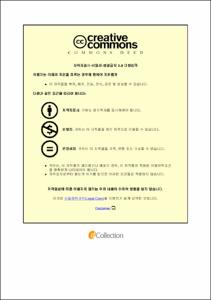참돔 껍질 중 아스타잔틴 분석에 의한 양식산 참돔의 국내산 및 일본산 판별
- Alternative Title
- Discrimination of Korean and Japanese Red Seabream (Pagrus major) with Cultivation by Astaxanthin Analysis on Its Skin
- Abstract
- The purpose of this research was to determine origin of cultivated red seabream by comparing pigment difference in its skin. Skin color of red seabream was affected by light and feed. Wild red seabream skin was red because it lived deep in the water, received less sunlight and ate crustaceans. Cultivated red seabream skin was dark red because it lived shallow area in the water, received a lot of sunlight and ate crustaceans. In order to make cultivated red seabream similar to wild red seabream, sunlight was blocked and feed containing astaxanthin was fed in Japan.
As results of color difference analysis, redness of Japanese red seabream was higher than Korean red seabream. Extraction solvent was selected by extracting using various solvents as acetonitrile, ethyl acetate, methanol, acetone, hexane and ethanol. Extraction temperature was selected by extracting at various temperature as 25℃, 35℃ and 45℃. Extraction time was selected by extracting at various time as 15, 30, 60, 120, 180, 240, 300 and 360 minutes. Conditions of extracting at 45℃ for 300 minutes using acetone was set. In the spectrophotometric measurement, Korean and Japanese red seabream were 6.46±0.20 μg/mL of skin and 9.24±0.15 μg/mL of skin, respectively. Japanese red seabream was 1.43 times as high as Korean red seabream. In the HPLC analysis, it was confirmed that astaxanthin content of Japanese red seabream was higher than that of Korean red seabream. Identification of astaxanthin was confirmed in LC/MS analysis. Monitoring was conducted to verify effectiveness of comparing the astaxanthin content of Korean and Japanese red seabream. Astaxanthin content of Korean and Japanese red seabream was 26.31±3.69 ∼ 49.84±7.12 μg/L and 81.59±10.52 ∼ 293.74±4.33 μg/L, respectively.
- Issued Date
- 2022
- Awarded Date
- 2022. 2
- Type
- Dissertation
- Keyword
- Red seabream Astaxanthin Skin
- Publisher
- 부경대학교
- Alternative Author(s)
- Eun Ji Cha
- Affiliation
- 부경대학교 대학원
- Department
- 대학원 식품공학과
- Advisor
- 양지영
- Table Of Contents
- Ⅰ. 서론 1
Ⅱ. 재료 및 방법 4
1. 재료 및 시약 4
2. 색도 분석 5
3. 아스타잔틴 추출 조건 설정 5
4. 분광학적 방법을 이용한 아스타잔틴 정량분석 8
5. HPLC를 이용한 아스타잔틴 정량분석 8
6. LC/MS를 이용한 아스타잔틴 정성분석 12
7. 국내산과 일본산 참돔의 원산지 모니터링 12
8. 통계 처리 14
Ⅲ. 결과 및 고찰 15
1. 색도 분석을 이용한 국내산과 일본산 참돔의 분석 15
2. 참돔 껍질의 아스타잔틴 추출 최적 조건 17
3. 분광학적 방법을 이용한 국내산과 일본산 참돔 껍질 추출물의 아스타잔틴 함량 비교 20
4. HPLC를 이용한 국내산과 일본산 참돔 껍질 추출물의 아스타잔틴 함량 비교 23
5. LC/MS를 이용한 국내산과 일본산 참돔 껍질 추출물의 아스타잔틴 정성분석 25
6. 아스타잔틴 분석을 통한 국내산과 일본산 참돔의 원산지 모니터링 25
7. 분석법에 따른 양식산 참돔의 국내산 및 일본산 비교 29
Ⅳ. 요약 33
Ⅴ. 참고문헌 35
- Degree
- Master
- Files in This Item:
-
-
Download
 참돔 껍질 중 아스타잔틴 분석에 의한 양식산 참돔의 국내산 및 일본산 판별.pdf
기타 데이터 / 1.23 MB / Adobe PDF
참돔 껍질 중 아스타잔틴 분석에 의한 양식산 참돔의 국내산 및 일본산 판별.pdf
기타 데이터 / 1.23 MB / Adobe PDF
-
Items in Repository are protected by copyright, with all rights reserved, unless otherwise indicated.